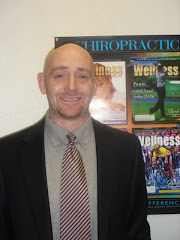According to the Journal of the American Medical Association (November 11, 1998), American’s use of homeopathic preparations more than doubled between 1990 and 1997 (Eisenberg et al. 1998). Most homeopathic texts are careful to emphasize homeopathy’s limitations and to advise consultation with a physician if symptoms persist. However, most texts insist that homeopathy accords with proven principles of science, citing its basis on experimentation, principles of vaccination, and discoveries in symptomatology and immunology, and the body’s reactions to physical and emotional stressors.
For those that study alternative and complementary medicine, homeopathy is one of several alternative therapies that use “magical” principles. The terms “magic” and “magical” have a wide range of meanings, but there are five basic principles that drive ritual practices, and these are similar among all peoples in the world, in all stages of recorded history.
These five principles include: (1) forces in nature separate from those measured in science, (2) power – the belief that the forces, and everything else is energized by a mystical power, (3) a coherent interconnected cosmos – where everything is actually or potentially interconnected, (4) symbols – the words, thoughts, things or actions that represent other things and can take on the qualities of things they represent; and (5) Frazer’s principles, in which he identifies two types of sympathetic magic.
Sir James George Frazer, in his book The Golden Bough, from early part of the 20th century, describes the two types of sympathetic magic: “Homeopathic magic” that works according to the “law of similarity” – things that resemble other things or actions have a causal connection, and “contagious magic” which obeys the “law of contact” - things that have been either in physical or spatial or temporal contact with other things retain that connection after they are separated.
The fundamental principle of Homeopathy’s founder, Samuel Hahnemann is “let likes cure likes.” This is an explicit expression of a magical principle. The allegedly active ingredients in homeopathic treatments were “proved” effective against a particular disease when they produced in healthy people symptoms similar to those caused by the disease. Hahnemann was aware that his theories might be relegated to the realm of “mere magic,” and he sought to explain homeopathy’s effects by reference to established science of the time. Hahnemann’s appeal then, and today, was enhanced because he was a well-educated physician and made legitimate criticisms of certain practices of his day. However, three fundamental principles of magic are involved in homeopathy: similarity, power and contact.
For now, the best explanation for claimed successes with homeopathic cures – assuming the original ailment was clinically genuine are: (1) as they are completely inert, homeopathic remedies allow nature to run its course, and / or (2) the placebo effect, which currently is the subject of renewed interest to medical research.
Other “alternative” and “New Age” beliefs also fall in the realm of “magic.” One of these is the belief in Crystals. Crystals have long been believed to contain concentrated power. Also, the magical healing of colors seems universal. Studies of how people take pills point to a preponderance of individuals over the ages willing to take red pills over white pills because of the expected benefits of the color.
Some of the most highly educated scholars believe that there are real connections in the universe – between the symbol and the referent, and that potentially measurable power flows between them.
Dr. Elisabeth Targ stunned the scholarly community when she received two million dollars in funds to study “distance healing.” Methods in her 1998 study, as reported in the Western Journal of Medicine (Sicher et al., 1998) involved forty American “experienced distance healers” from several different religious traditions. They were each given “five subject information packets” containing personal data of those they were to “heal.” Healers were instructed to open their packets on certain dates and “to work on the assigned subject for approximately one hour per day, for six consecutive days with an instruction to ‘direct an intention for health and well-being.’ to the subject. We recognize that this modern test of healing involved at least four of the classic principles of magical thinking: power, interconnections in nature, symbols, and similarity.
(Summarized from the SKEPTICAL INQUIRER, Nov/Dec 2001 pp32-37; Article by Phillips Stevens, Jr. – used by permission of the SKEPTICAL INQUIRER, Amherst, NY.)
Subscribe to:
Post Comments (Atom)



No comments:
Post a Comment